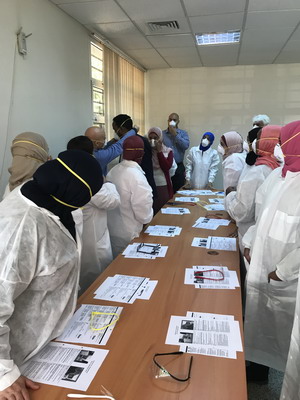 29 April 2018 – During the joint external evaluation (JEE) for IHR core capacity assessments in the Region, one of the critical gaps identified was absence of a laboratory biosafety and biosecurity programme with limited availability of skilled laboratory workforce for managing such programmes.
29 April 2018 – During the joint external evaluation (JEE) for IHR core capacity assessments in the Region, one of the critical gaps identified was absence of a laboratory biosafety and biosecurity programme with limited availability of skilled laboratory workforce for managing such programmes.
Between 16 and 20 April, 2018, the WHO Regional Office for the Eastern Mediterraneanorganized a 5-day regional biosafety training course for the containment of influenza and other infectious diseases of international concern in Casablanca, Morocco.
The training course was hosted at the Institute of Pasteur in Casablanca while the Association of Public Health Laboratory of the United States of America and the Centers for Disease Control and Prevention, Atlanta, United States of America, collaborated with the WHO Regional Office to facilitate the course.
A total of 44 participants from 20 countries in the Region who were mainly laboratory managers and biosafety officers working at national influenza centres or public health laboratories attended this course. The course was one of the many other priority activities undertaken by the Infectious Hazard Management Programme of the Department of Health Emergency to improve biosafety and bio-security practices at the laboratories while dealing with high threat pathogens like Middle East respiratory syndrome, Crimean-Congo haemorrhagic fever, Rift Valley fever, as well as other zoonotic and novel influenza viruses. The 5-day training course focused on bio-risk assessment and mitigation measures; developing and operationalizing biosafety manuals; maintenance of bio-safety cabinets; designing the laboratory facilities keeping into consideration different biosafety levels and safe practices, biosafety management programmes including safe transportation of infectious substances, safety inspections and audits.
Following the training course an “after action plan” was finalized with the participations to establish a mechanism for monitoring the implementation of laboratory biosafety programmes at national influenza centres and other public health laboratories in the Region for addressing the critical gaps in laboratory biosafety practices.




